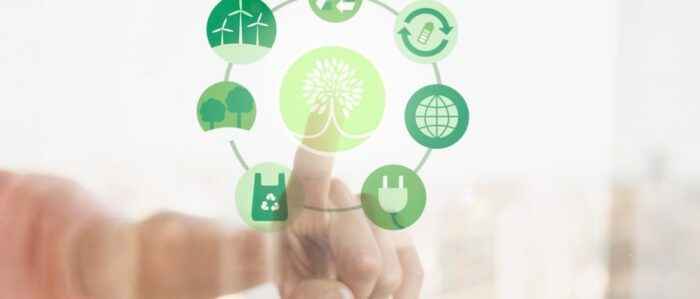
By Equipe de Redação
Posted in March 1, 2023

What is Circular Economy?
Circular economy is an economic concept that is part of sustainable development, which intends and sees manufacturing and consumption within a cyclical logic, extending the useful life of products, reusing waste and saving natural resources. According to the Ellen MacArthur Foundation, the concept follows three principles:
So that all raw materials are used until they are exhausted, and can be transformed, reused or recycled. Without resorting to early disposal, a measure that is harmful to the environment. Which occurs in other types of economy such as Linear.
Linear Economy
Linear economics is the dynamic that conditions growth in production and efficiency to a closed process, in which the useful life of the material has only five stages:
A process that was predominant in the last centuries, being one of the direct responsible for countless environmental problems that we face today, the good news is that this model has been losing ground with the new measures and implementation of the Circular Economy.
How Circular Economy works
The circular economy adapts what would be the end of the linear economy process, adding phases to extend the useful life of products.
While the first steps are the same as in the linear economy, they are often focused on reducing waste and reusing materials. Its logic begins long before consumption, as it starts from awareness of the importance of natural resources.
So that it is not always necessary to extract a new natural resource, this can result from a recyclable input, which is transformed into raw material for a new product.
Also note that consumption is followed by maintenance and repair, so that materials have a longer useful life and can be reused.
In the last phase, recycling is the first option, and disposal only happens when the resource has been exhausted. They will only be discarded when they can no longer be reused, and in a conscious way, aiming to reduce the environmental impact.
Importance of Circular Economy
With the implementation of the Circular Economy, it is possible to preserve natural resources, even reverse some environmental damage such as river and soil pollution, global warming and the cutting down of forests.
It guarantees technological innovations, jobs and income, without destroying the environment and depleting resources.
Betting on this system generates several positive impacts, including an increase in the supply of natural resources and greater efficiency for companies of all sizes. This dynamic eliminates waste throughout the production chain, representing savings for industries, their partners and the end customer.
In addition to all the benefits of social and environmental well-being, this implementation provides companies that invest in the circular economy with positive visibility before employees, consumers and society, being recognized as responsible organizations that care for the well-being of the planet.
As the National Confederation of Industry (CNI) points out, the new Circular Economy model adds value to good practices that increase the competitiveness of national production.
With information: FIA
For your company
Whatever the area in which a company operates, it is necessary to be aware that every industry is born with a polluting potential inherent to its business profile and that, therefore, the management of environmental risks needs to gain more and more sophistication in the face of the markets. globalized countries, where commercial partnerships are also based on affinities that include issues related to environmental policies and practices.
Ambipar has a specialized technical team to support client companies in the adoption and control of the best global waste management practices and compliance with legal requirements. Through its Strategic Environmental Consultancy


Our business analysts are ready to help your company with the best environment solutions.